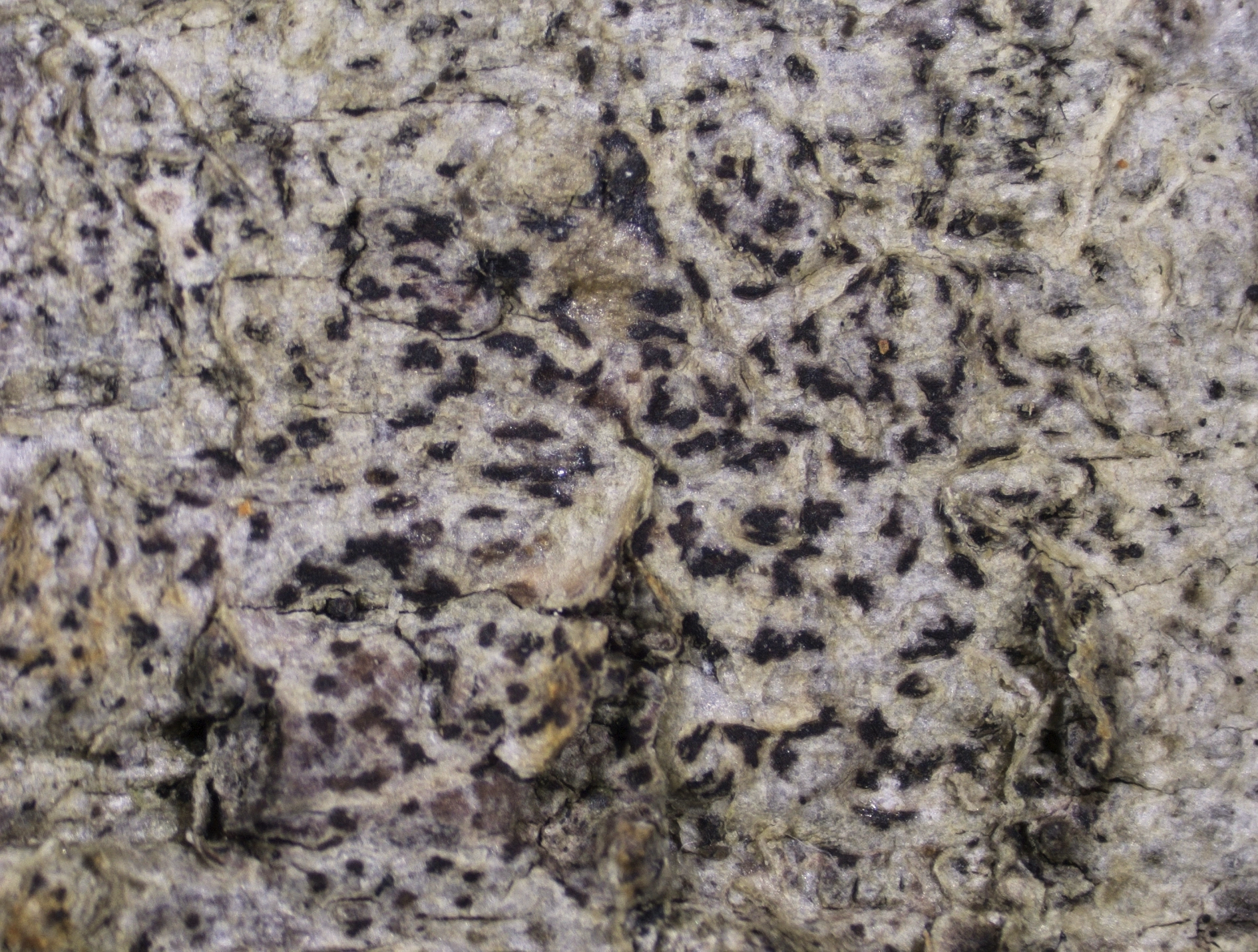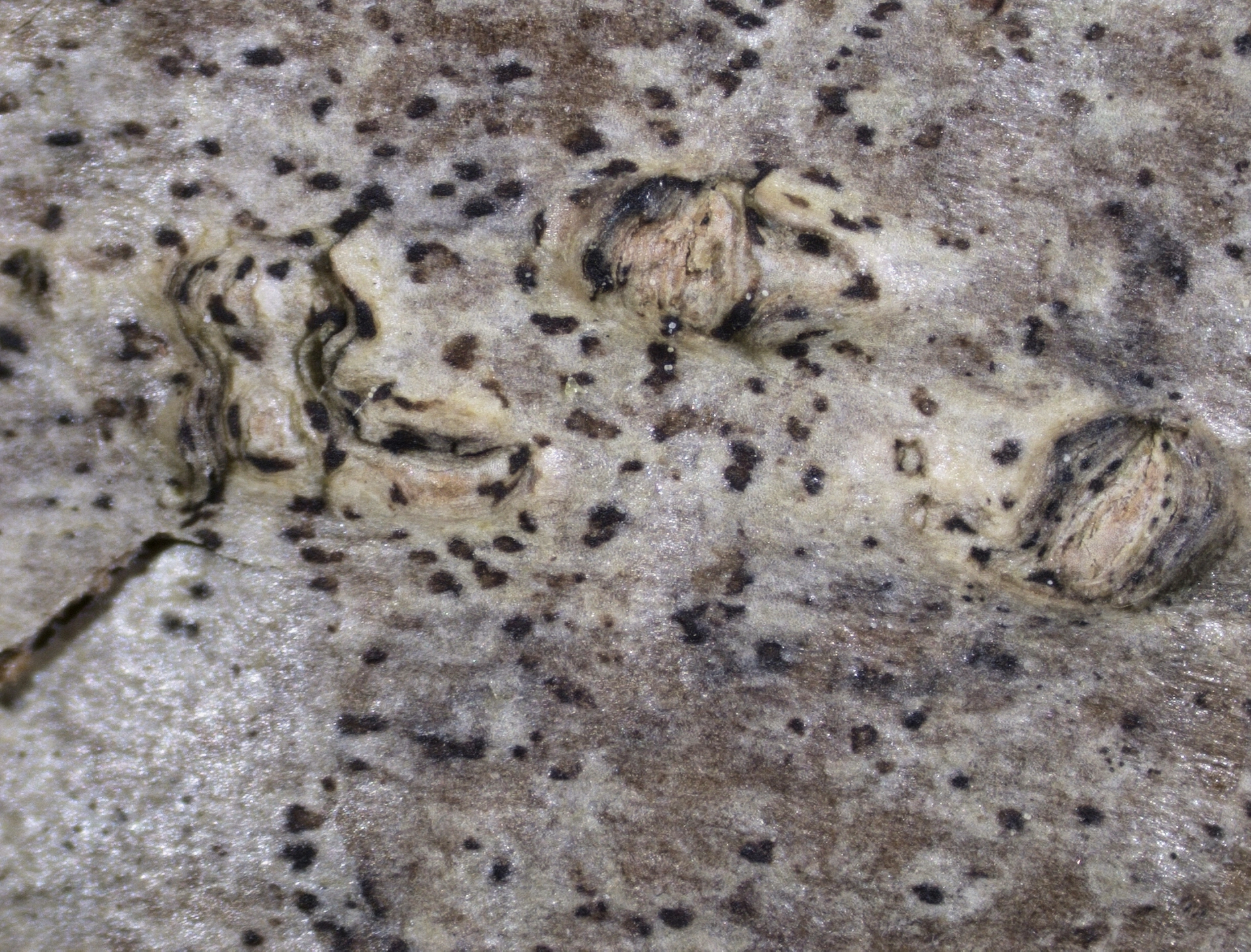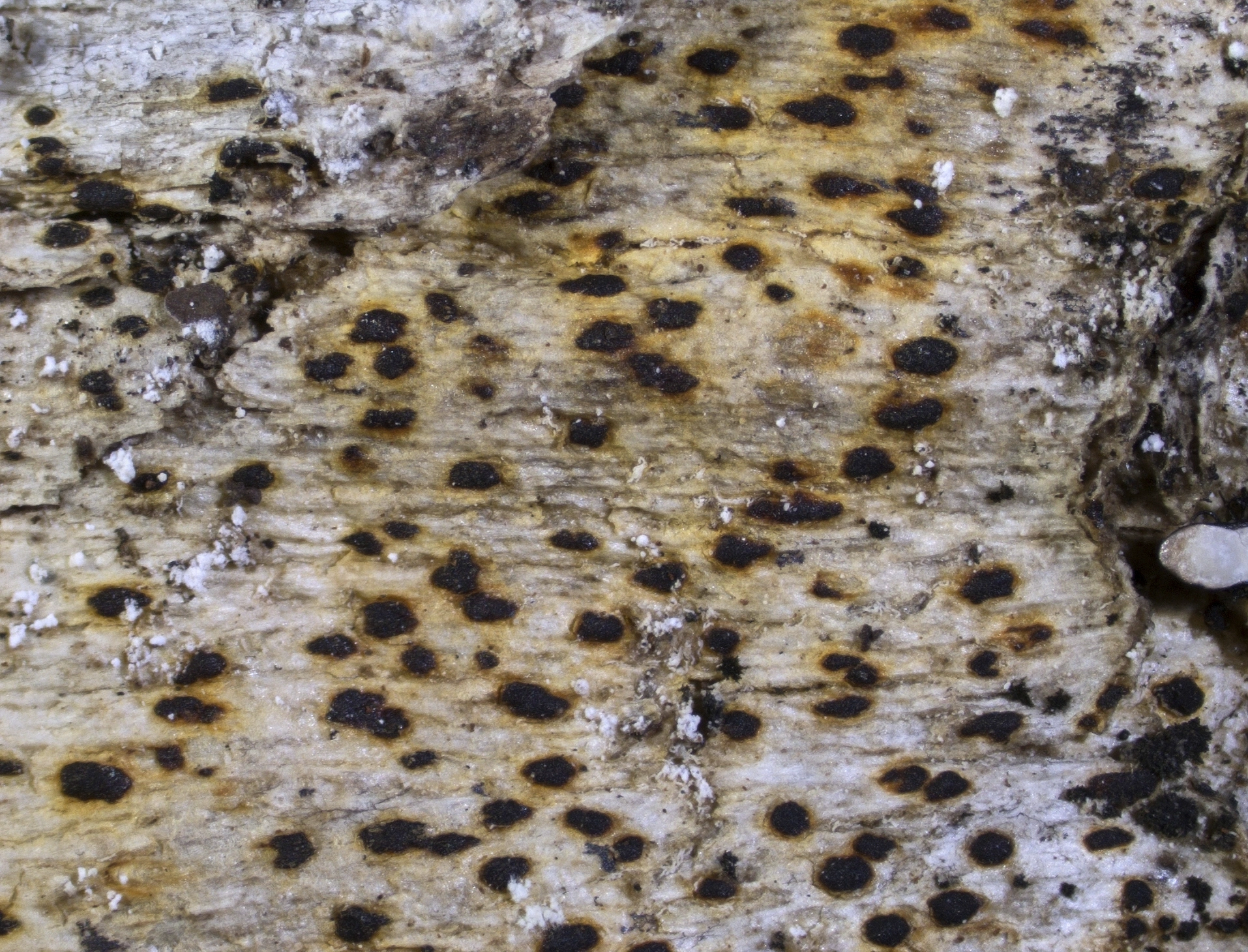Arthonia didyma
Arthonia didyma collected from the leaning trunk of Betula sp. north of Eidsvoll (O-L-118963).
Arthonia didyma is a common species on smooth bark of deciduous and coniferous trees in humid forests and woodlands throughout southern and central Norway. It is characterized small dark orange-brown to brown-black apothecia on a pale fawn or grey olive thallus with a trentepohlioid photobiont. The 1-septate spores are brown and warted when old.
- Innhold
- Description
- Ecology
- Distribution in Norway and the Nordic countries
- Global distribution
- Similar species
Description
Thallus
The thin thallus is pale fawn to olive-grey with often a pink hue when fresh. It is smooth and immersed in the substrate. The margin is not determinate. The thalli are extensive or occur in tiny patches that are often found around small elevations on the host bark like lenticels, leaf scars, or bases of twigs and branches. The photobiont is a species of the family Trentepohliaceae.
Fruitbodies
The apothecia are maculate, dark orange-brown to brown-black, and without pruina. They are flat to slightly convex, irregularly rounded, elongated or indistinctly branched, 0.06–0.6 × 0.06–0.3 mm in size, and 45–70(–100) μm tall.
The epithecium is reddish brown or indistinct.
The hymenium is colorless or pale orange-brown, and 30–50 μm tall.
The hypothecium is reddish brown and up to 30 μm tall.
The paraphysoids are ca 1 μm wide. Their tips are often enlarged to 2.5 µm and brown-walled.
The asci are narrowly clavate, 42–55 × 12–18 µm, and 8-spored.
The spores are colorless first, with a brown pigmentation and granular ornamentation when old. They are obovoid, 12–18 × 5–8 μm in size, and divided by 1 transverse septum.
Anamorph
The pycnidia are reddish brown, immersed in the thallus, and 40–60 µm in size. The wall is red-brown. The rod-shaped conidia are 3.5–4 × ca 0.7 μm in size and straight.
Chemistry
The thallus does not react with C, K, KC, Pd, or UV (C–, K–, KC–, Pd–, UV–). Unidentified anthraquinones have been detected in some individuals by TLC.
The hymenium reacts I+ blue and KI+ blue. A KI+ blue ring structure has been observed in the asci.
The reddish-brown pigment in the apothecia and the wall of the pycnidia changes to grey to olive in K solution. If present, the additional orange-red pigment in the apothecia changes to purple-violet in K solution.
Arthonia didyma collected from Corylus avellana at Øgården-Kile in Hvaler (O-L-223418).
Ecology
Arthonia didyma is a common species in the interior of humid deciduous and coniferous forests and woodlands. The species typically grows on smooth bark of deciduous and coniferous trees. Arthonia didyma is a lowland species that is most often recorded below 500 m elevation. Common host trees in Norway are alder (Alnus spp.), birch (Betula spp.), common hazel (Corylus avellana), goat willow (Salix caprea), oak (Quercus spp.), and rowan (Sorbus aucuparia). Other reported host trees include aspen (Populus tremula), European ash (Fraxinus excelsior), European beech (Fagus sylvatica), Norway spruce (Picea abies), Scots pine (Pinus sylvestris), small-leaved lime (Tilia cordata), and wych elm (Ulmus glabra).
Distribution in Norway and the Nordic countries
Arthonia didyma is common and widespread in southern and central Norway. In northern Norway, it has been collected up to Leirfjord municipality in Nordland. In the Nordic countries, it is further known from Denmark, Finland and Sweden.
Global distribution
Outside the Nordic Countries, A. didyma is widely distributed in submediterranean to southern boreal climates in Europe and North America. It is further reported from central and eastern Siberia and from Australasia.
Arthonia didyma collected from Fagus sylvatica west of Langdalen in Larvik (O-L-22740).
Similar species
Morphs of Arthonia didyma with K+ purple pigments in the apothecia can be similar to small individuals of Arthonia vinosa. They are distinguished from the latter species by thinner fleck-like apothecia, 0.1–0.5 mm in size and up to 70 µm thick, that are often elongated or even indistinctly branched. The apothecia of Arthonia didyma further often grow in distinct swarm-like aggregations on a pale fawn to olive-grey thallus. The spores of Arthonia vinosa are smaller than in Arthonia didyma, 10–15 × 3.5–5 µm in size.
Small individuals of Diarthonis spadicea differ by the usually less convex apothecia and smaller spores, 7–11 × 3–4 µm in size, that are not brown and warted when old. The red apothecial pigment does not dissolve in K solution.
Literature
Cannon P, Ertz D, Frisch A, Aptroot A, Chambers S, Coppins BJ, Sanderson N, Simkin J and Wolseley P (2020). Arthoniales: Arthoniaceae. Revisions of British and Irish Lichens 1: 1–48.
Wirth V, Hauck M and Schultz M (2013). Die Flechten Deutschlands, vol. 1+2. Ulmer, Stuttgart. 1244s.




